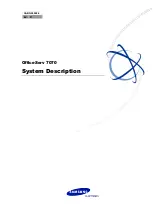
Digium, Inc.
Page 91
Chapter 3: Telephone System Configuration
–
Z - Any digit from 1-9
–
N - Any digit from 2-9
–
[1,2,3,6-9] - Any digit within the brackets, in this instance 1, 2, 3, 6,
7, 8, 9.
–
. - The period is the wildcard which will match anything remaining.
For example, _9011. matches anything starting with 9011.
–
! - The exclamation point is a wildcard which causes the matching
process to complete as soon as it can determine that no other
matches are possible.
Note: If you have selected an analog trunk, this field will be grayed
and populate with an s. This is not a pattern, but an indication that the
analog phone should proceed to the destination.
Destination -
Select the Destination for the incoming call. You can
choose to send the call to to either a voice menu, a specific extension,
voicemail box, ring group, the operator, or even hang up the call.
–
The Local Extension by DID destination setting allows you to
route the incoming call to a local extension based on the DID
(Direct Inward Dialing) number that is sent to you by your telecom-
munications provider. Upon selecting Local Extension by DID,
you will notice the Local Extension by DID Pattern option appear.
This option gives you the ability to remove a specified number of
digits from the front of the DID number string before routing the
call to a local extension.
Note: The Local Extension by DID destination setting is not
applicable for analog trunks.
The rules you need to create are dependent on your needs. If you are
configuring your system for a business, for example, you’ll probably want
to set up rules for business hours, off hours, weekend hours, etc. In any















































